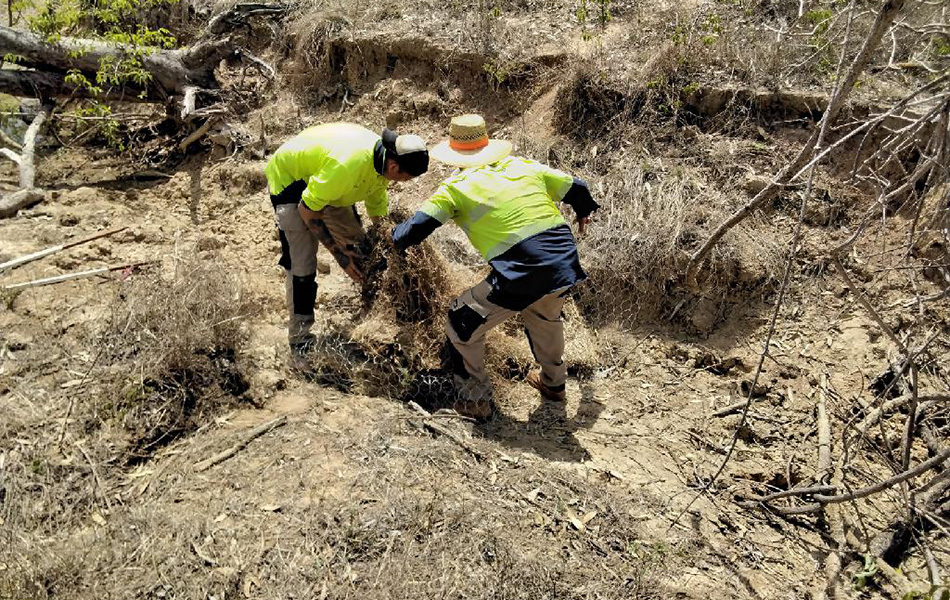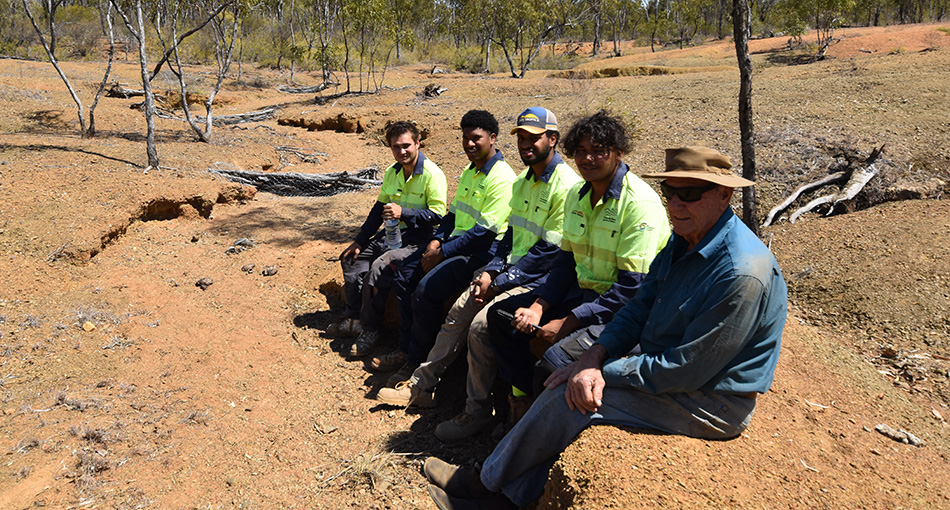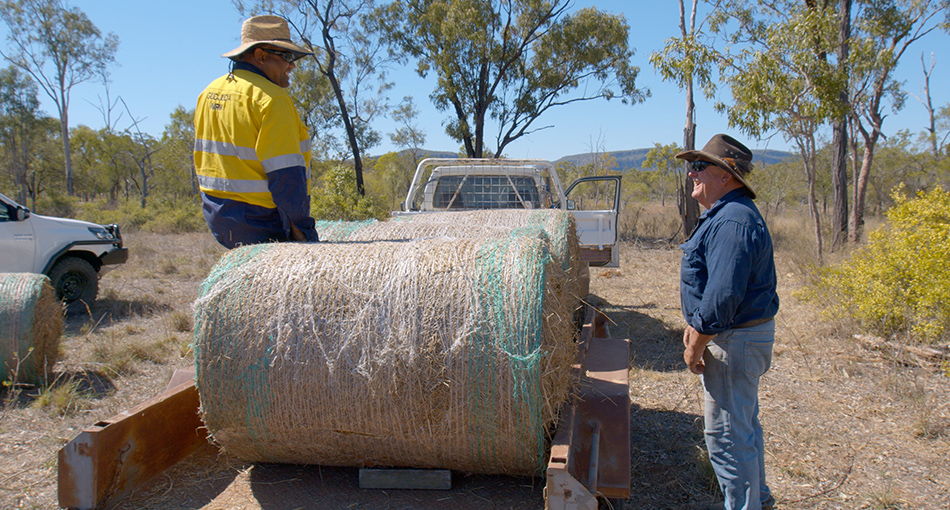Healing Country team can help small-scale erosion problems
NQ Dry Tropics’ Healing Country team can help landholders tackle small-scale erosion before it develops into a bigger problem.
The team uses non-mechanical methods where fragile soils mean machines aren’t the best option.
One example is the use of leaky weirs (porous check dams), designed to trap sediment and help promote vegetation growth. Bare areas can be covered with a layer of mulch to provide a protective cover to reduce the erosion that occurs from raindrop impact.
There is minimal contribution required (maybe a bit of hay) and the team can tackle most gullies up to 1m deep.
The project enables young First Nations people to connect with Country while helping to improve land condition and reduce sediment run-off.
Led by NQ Dry Tropics, the project is funded through the Queensland Government’s Reef Assist program under the Queensland Reef Water Quality Program.
Properties in the BBB, East Burdekin, and Lower Burdekin regions are eligible.
For more information and to get help applying, contact Jake Bowyer on 0488 440 643 or jake.bowyer@nqdrytropics.com.au.
Members of the Healing Country team assemble a leaky weir or porous check dam using chicken wire to hold rock and branches together.
Landholders explain the benefits of the Healing Country team’s contribution
Pictured (from left) is Cade Wells, Tyresse Neliman, Ethan Upkett-Neliman and Lewis Kyle, of Three Big Rivers, with grazier Dino Penna, in the Upper Burdekin. The team is installing a series of leaky weirs (can see some in the background) to help keep water in the landscape and to improve infiltration to promote vegetation growth.
Team added 31 weirs and 10 stick lines on Kangaroo Hills
Dino Penna, of Kangaroo Hills, in the Upper Burdekin, jumped at the opportunity to work with NQ Dry Tropics’ Healing Country team to help tackle a troublesome erosion hotspot.
A total of 31 leaky weirs and 10 stick lines were installed on a scalded area that was gullying in the middle of a desirable grazing paddock. A 1.86ha area was also revegetated.
Dino said the works complemented other activities being carried out across the property to ensure sufficient end of dry season ground cover.
“Retaining water is key to improving grazing management and land condition, and our overall grazing business operation revolves around getting these right,” Dino said.
“Leaky weirs are designed to slow water and sediment moving down a slope, and spread over floodplain areas, to allow more of the sediment to drop out instead of being carried all the way down to a creek or river.
“If they hold up over consecutive wet seasons, then that’s success. We’ll see improved infiltration and vegetation, that means improved ground cover.”
Leaky weirs are built from natural materials such as rocks, logs, sticks and vegetation, sourced from the immediate surrounds on-property, making them a cost effective tool for landholders to combat erosion.
Hell’s Gate work included 48 weirs and 10 stick lines
The Healing Country team addressed several eroded sites on Hells Gate, Collinsville, owned by grazier Owen Howard.
Across three sites, 48 leaky weirs and 10 stick lines were constructed, and more than 5ha were revegetated, including the spread of mulch hay.
Owen said the Healing Country team’s work had helped accelerate recovery of multiple eroded sites on the property.
“What’s being achieved, with the help of NQ Dry Tropics and its contractors, is to fast track work on badly scalded and eroded sites,” Owen said.
“Every bit helps, and I do appreciate everyone’s involvement in helping us achieve good outcomes for production and for the environment.
“Success is also due to the implementation of a grazing management system to complement the on-ground works.
“We’ve improved water distribution, undertaken wet season spelling and rotated stock through paddocks to aid recovery. So far, it’s working.”
Healing Country team member Michael Backo (in the trailer), shares a joke with Hell’s Gate grazier Owen Howard before unloading mulch hay to be spread across scalded and bare ground.



